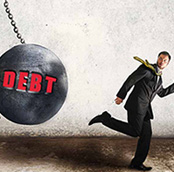The Discharge of Student Loans in Bankruptcy
Can You Discharge Student Loan Payments in Bankruptcy?
For many Americans struggling with overwhelming debt, the single biggest obligation they face is student loans. Unfortunately, it is extremely hard to discharge student loan debt in bankruptcy. Here are the limited circumstances when you may successfully rid yourself of such a debt.
Do You Qualify for the “Undue Hardship” Exception?
The only way you can successfully discharge student loan debt is to demonstrate to the bankruptcy court that repayment would constitute “an extreme hardship.” The test most commonly used by the courts was set forth in Brunner v. New York Higher Education Services Corp., decided in 1987. Under Brunner, the court will use three factors to determine whether repayment of the student loan obligation would bring about an undue hardship:
- Have you made a good faith effort to repay your student loan?
- If you are required to repay the loan, will you be able to maintain a minimal standard of living, based on current income and expenses?
- Is there evidence to indicate that your current financial situation is likely to occur for a significant period of time?
What is the “Totality of Your Circumstances”?
Other courts adopt a less rigid test, instead looking at “the totality of the circumstances.” Under this test, a court will typically not give inordinate weight to any factor, but will try to determine, given all the facts and evidence related to your current and prospective financial health, whether requiring you to pay the student loan would create an undue hardship.
Restructuring Student Debt through Chapter 13
It is generally much easier to enter into a repayment plan for student loans, where you agree to repay the debt over a three-to-five-year period. Any amount still owed after the Chapter 13 is completed will not be discharged, though.
Connect with Top-rated Attorneys Near You
Sponsored Advertisement
Latest Article
The Exclusionary Rule: Definition, Examples, and Impact
What Is the Exclusionary Rule? What Are Common Situations Where It Applies? Are There Exceptions? How Has It Changed Cri... Read More
False Imprisonment: Protecting Yourself Against Wrongful Detention
What Is False Imprisonment? What Are the Potential Remedies? Are There Exceptions to the Rule? As humans, one of our mo... Read More
Lying Under Oath: The True Penalty for Perjury
What Is Perjury? What Must the Prosecutor Prove? What Are the Penalties? In the legal system, oral and written testimon... Read More
GETLEGAL®ATTORNEY DIRECTORY
Find Leading Attorneys in Your Area
NEED PROFESSIONAL HELP?
Talk to an Attorney
How It Works
- Briefly tell us about your case
- Provide your contact information
- Choose attorneys to contact you





